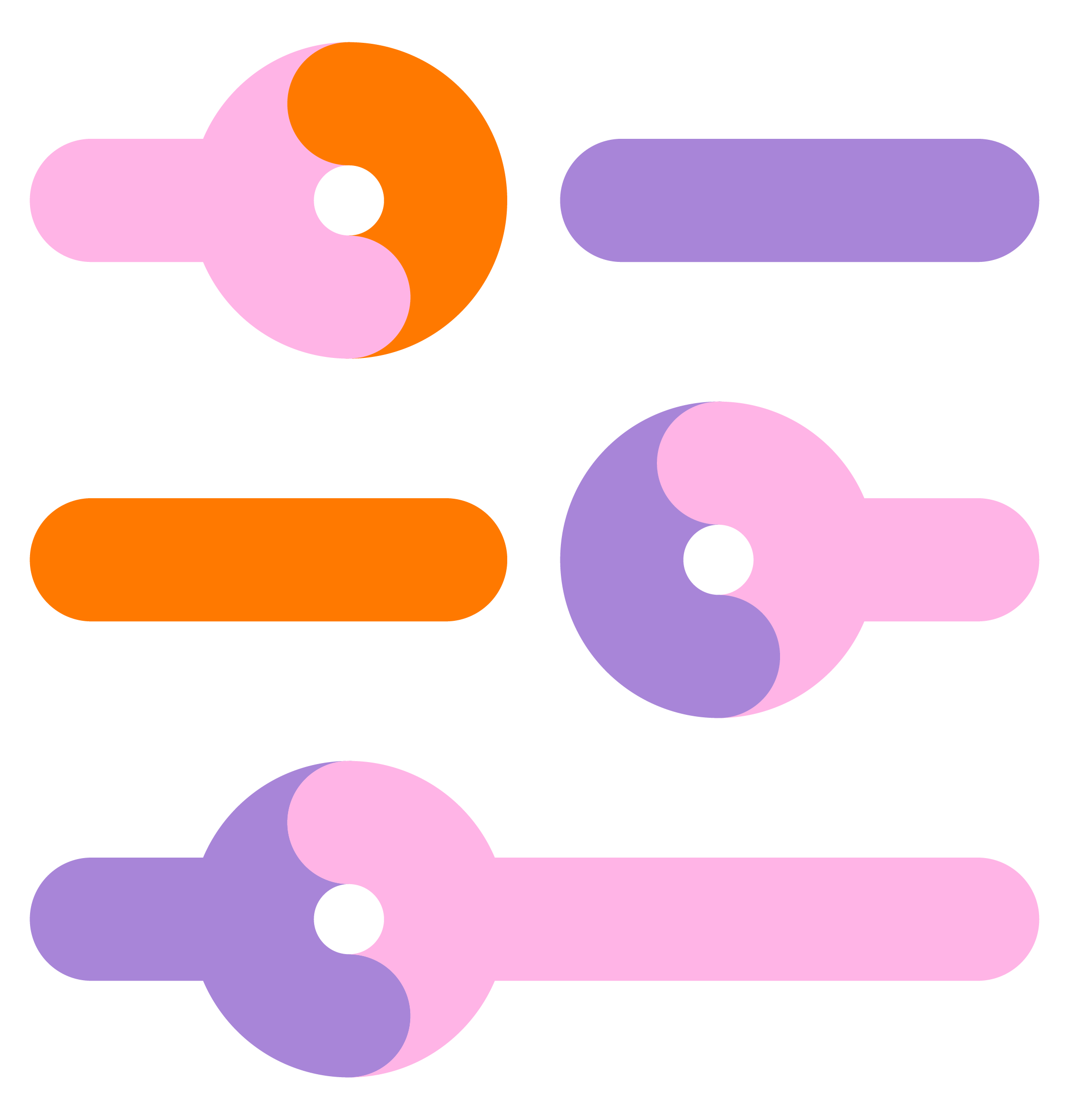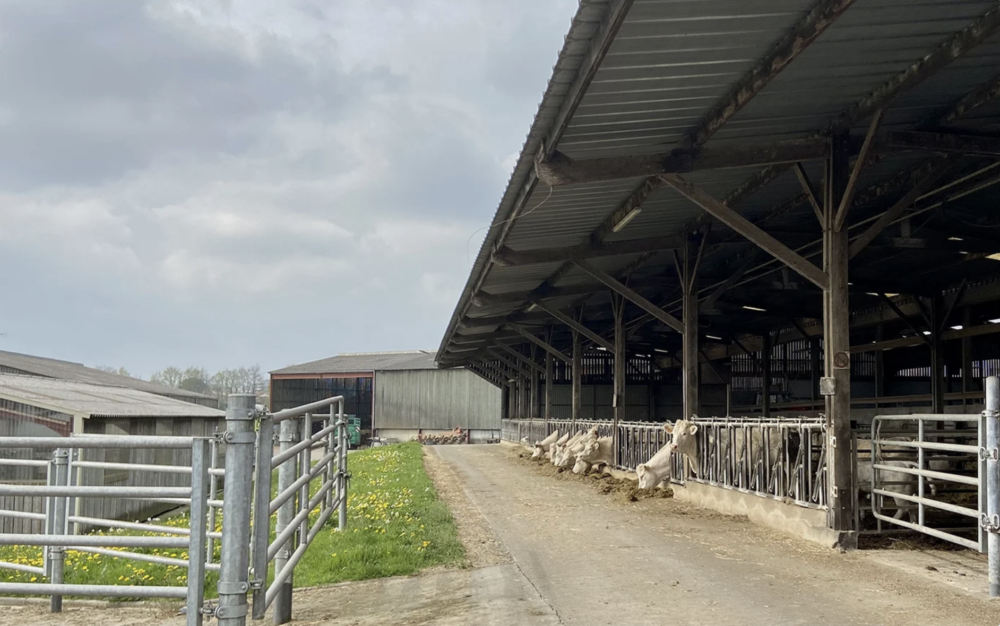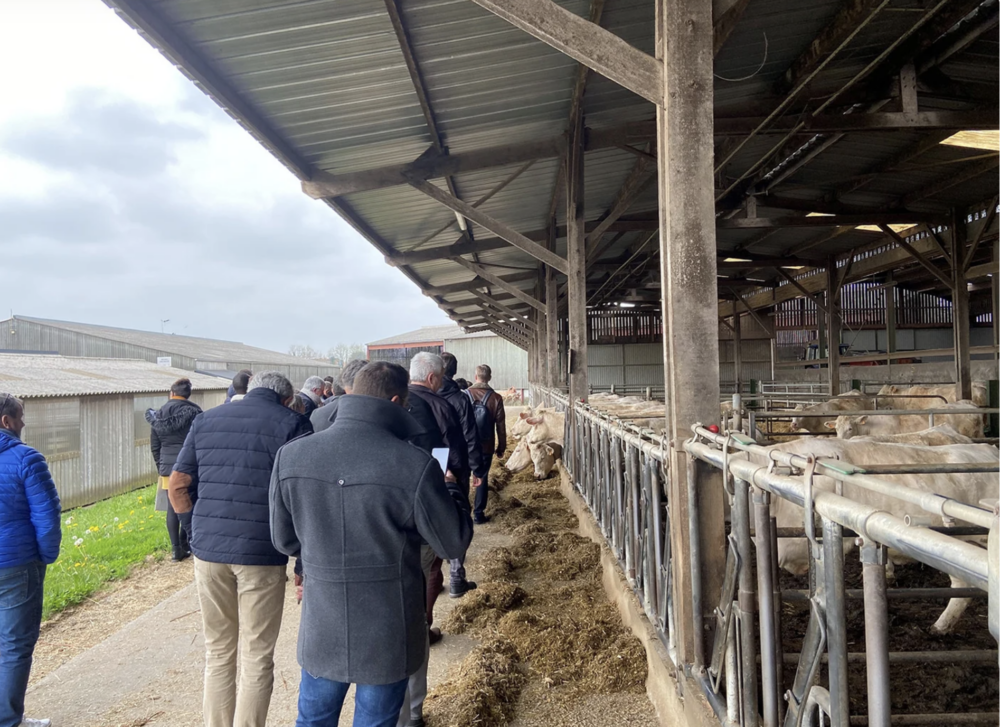Supported by France’s Orange 5G Labs, Orange Business is actively contributing to the 5G4AGRI collaborative project, which is spearheaded by La Chambre d’agriculture Pays de la Loire (Chamber of Agriculture in the Loire region) and enjoys the backing of a consortium comprising various companies, organizations, and academics. Their collective vision is to establish a platform dedicated to the collaborative development and evaluation of products and services that harness the capabilities of 5G within the agricultural sector, with the ultimate goal of enhancing the welfare of farmers.
Pays de la Loire Chamber of Agriculture experimented with 5G.

Line of business
A collaborative experimentation platform that enables startups and digital companies to test and trial their innovative solutions – products and services dedicated to agriculture – in real-life conditions, notably on two experimental farms connected by 5G.

Solution
A local 5G campus network established at the Ksawerów plant in Poland, enabling innovative digital solutions for production automation and optimization of operational processes.

Company’s Needs
High-performance, secure, and responsive connectivity for near-real-time data transfer, along with an autonomous mobile network that ensures reliable utilization of new technologies and supports actions performed by robots and artificial intelligence.

Benefits of 5G
- Ultra-low latency
- High bandwidth
- Network stability and robustness to avoid any risk of interruption or data loss
- Connection autonomy (no need to connect to a local fixed network)
An ambitious 3-year project
Launched in June 2021 and scheduled to run until December 2024, the 5G4AGRI collaborative platform includes two experimental farms:
- La Ferme des Établières in La Roche-sur-Yon (Vendée region), specializing in beef cattle and crop production.
- The Derval Farm (region of Nantes), focusing on dairy cattle production.
These agricultural spaces will be complemented by a collaborative innovation center and an active stable located at the Établières Group site. These facilities will soon provide startups and digital companies with opportunities to test and trial their innovative solutions in real-life agricultural conditions.
As a network operator and a digital solutions integrator through Orange 5G Lab, Orange Business was enthusiastic about supporting this collaborative experimentation project.
We’re still determining which use cases will truly benefit from 5G. With assistance from Orange 5G Lab, they have compiled a list of various use cases that will soon undergo testing on the new mobile network to assess the value of 5G. While some use cases might ultimately find greater advantages with another communication network, the essence of experimentation is to explore these possibilities fully.
Lucile Lefèvre, the Innovation and Digital Agriculture Officer at the Pays de la Loire Chamber of Agriculture, explains their approach.

Trials that consider the potential benefits of future 5G technology
The 5G4AGRI Consortium comprises 10 partners, each deeply understanding the data value chain. Orange Business and its Labs bring expertise in 5G technology and insights into the future of 5G.
Orange 5G Lab, particularly the one in Rennes, has been actively engaging with the Consortium, providing valuable insights into future iterations of 5G not yet deployed on the national network. These ongoing exchanges are driving the ambitions of the 5G4AGRI project, partially funded by the government’s stimulus plan and the Future Investment Program. Its objectives include enhancing animal welfare on farms, reducing disease risks, and achieving more autonomous food production.”In addition to Orange 5G Lab, Orange collaborates with the Nantes Veterinary School and telemedicine startup AMA. Mathias Herman underscores the significance of a robust mobile connection in agriculture: “Together, we have witnessed the tremendous value of a strong mobile network in the agricultural sector. When combined with innovative solutions, it has the potential to prevent animal diseases and deliver essential new services to breeders and farmers.
Mathias Herman, Head of Smart Agriculture at Orange Business, highlights their collaboration..
Smart agriculture: high-potential use cases
The first pertains to the remote control of robots.
Lucile Lefèvre, responsible for innovation and digital agriculture at the Pays de la Loire Chamber of Agriculture, outlines three compelling use cases for 5G.
Upcoming experiments within the collaborative initiative will allow project stakeholders to thoroughly evaluate the tangible potential of 5G, encompassing financial considerations, through comparative analyses with existing connectivity systems.
Presently, the remote control of field robots necessitates on-site operators wielding joysticks, posing a significant limitation. However, this challenge can be surmounted once we demonstrate the absence of latency between issuing a remote command and the robot’s immediate response. In this regard, our substantial investment in 5G is well-founded, given its track record of minimal latency and high throughput in various applications. Furthermore, the potential advantages extend beyond these attributes. Logically, the exceptional connection quality of 5G opens doors to novel remote control functionalities, robust enough to empower farmers to reduce their fieldwork hours effectively.
As highlighted by the project manager at the Pays de la Loire Chamber of Agriculture.
This time-saving benefit could also contribute to improved pesticide management. Robots equipped with 5G connectivity in the near future might independently perform mechanical weeding, potentially reducing the reliance on pesticides, which currently represents a less efficient alternative.

Remote operation of robots in agricultural fields: a use case already tested in Senegal
Between 2021 and 2022, Orange Senegal conducted a series of experiments in collaboration with the German artificial intelligence startup, Immersive Now.
We set up a mock field on a 3 x 4-meter area and planted flowers and fruit.
recalls Mamadou Diop, Project Manager at Orange Senegal.
A 5G-connected drone was deployed to fly over the entire area, assessing the ripeness and hydration levels of the crops in near-real time.
It counted the fruit and provided real-time ripeness information.
Based on this data, the drone operator could activate the automatic watering system on the ground with a simple click, depending on the fruit’s ripeness.
Initially, the startup had developed an application for fruit recognition. However, through collaboration with us, before and during the experimentation, the startup realized the many additional functionalities it could develop and offer. In practical terms, the high bandwidth and ultra-low latency of 5G empower agricultural objects to operate with greater autonomy. When connected to 5G and integrated with artificial intelligence, all objects can be precisely controlled and operated remotely at the right time and location.
This advancement promises increased productivity and more judicious use of water and pesticides.
E-health: a significant advancement for livestock farmers thanks to 5G
The second relevant use case identified by the 5G4AGRI project consortium is veterinary teleconsultation, a significant asset for the agriculture sector. This remote service offers a tangible and effective solution to address the issue of veterinary scarcity in France. It also aligns well with the current health situation, considering the outbreaks of bird flu and swine flu affecting farms. Veterinarians are under immense pressure, having to travel extensively between farms.
By eliminating the need for travel (averaging 200 to 300 kilometers per day per veterinarian), teleconsultation not only saves time but also reduces the risk of disease transmission among farms. This use case holds great promise, and 5G is poised to play a pivotal role by expanding the realm of connectivity possibilities!
Explains Lucile Lefèvre.
Artificial intelligence for agricultural professionals
The final use case within the Consortium’s scope builds upon an initiative already underway within farm facilities.
We have installed cameras in certain buildings.These cameras capture footage of animals to train an artificial intelligence system that, in the future, could potentially conduct behavioral analysis and subsequently alert farmers. 5G paves the way for even greater performance and possibilities in this scenario. With it, livestock breeders could receive real-time behavioral analysis of their animals without needing local artificial intelligence via costly Edge computing boxes. The ultra-low latency, high bandwidth, and autonomy of 5G would allow us to keep everything on the servers of the organization that developed the artificial intelligence while benefiting from its insights in near-real time. We will gain more insights into this through upcoming experiments.
Explains the Pays de la Loire Chamber of Agriculture Project Manager.
Lucile Lefèvre is convinced that the combination of cameras and artificial intelligence will greatly benefit breeders, enabling them to address any challenges that may arise in their profession proactively.
Certain artificial intelligence systems can predict that an animal is unwell nearly 24 hours before human detection becomes possible.
The current challenge lies in ensuring these technological advancements are accessible to agricultural professionals.
Behavioral analysis could help us understand various issues, including fluctuations in production levels. For instance, it can offer insights into what occurs when human influence is absent, and the facility operates autonomously
Lucile Lefèvre, Innovation and Digital Agriculture Officer at the Pays de la Loire Chamber of Agriculture.
5G allows us to position processing capabilities close to the objects connected to the mobile network. This is not feasible with 4G due to network saturation from the multitude of connected devices. 5G alleviates this congestion and allows allocation throughput according to each object’s specific requirements. Beyond enhancing connectivity reliability, this approach significantly reduces energy consumption, thus contributing to a lower carbon footprint for both devices and the mobile network.
Mathias Herman, Head of Smart Agriculture at Orange Business.
The upcoming steering committee meeting for the 5G4AGRI collaborative project is scheduled for autumn 2023 at Orange 5G Lab in Rennes. During this meeting, the initial experiments in collaboration with the 5G Lab will be defined and subsequently tested on the 5G network provided by Orange.
Connected vehicles: How is 5G transforming the mobilities of the future?
Discover the webinar summary
Learn out more

Subscribe to our Orange 5G Lab newsletter
